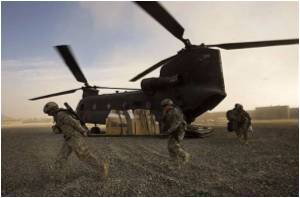Gulf War Illness (GWI)—the chronic health condition that affects about one in four military veterans of the 1991 Gulf War—appears to be the result of several factors, which differed

"Understanding the causes of GWI has presented a complex puzzle in the 20 years since the Gulf War," said Lea Steele, Ph.D., Baylor University epidemiologist and lead author of the study. "Many of the nearly 700,000 U.S. veterans who served in that war encountered different levels and combinations of potentially hazardous substances. Our study determined that wartime exposures and rates of GWI were not the same for all veterans in all areas. In earlier studies, the causes of GWI often seemed indecipherable, when such differences were not taken into account."
The study found that GWI prevalence was nearly six times higher in veterans who served in Iraq or Kuwait, where all ground battles took place during the 1991 conflict, compared to veterans who remained on board ship during the war. For troops in the high-risk areas, GWI prevalence was 3.5 times greater in the subgroup that used pyridostigmine bromide pills, or PB, compared to those who did not use PB, which was issued by the military as a protective measure in the event of a nerve gas attack. GWI was also increased for forward-deployed personnel who reported being near exploded SCUD missiles or smoke from the Kuwaiti oil fires, and pesticide use.
In contrast, for veterans who remained in support areas, GWI was significantly increased only in the relatively small subgroup that wore pesticide-treated uniforms and also used skin pesticides. The study found no significant link between GWI and warzone experiences associated with a high degree of psychological stress, such as serving in combat and seeing others who were killed or badly injured.
The study evaluated symptoms, health conditions and deployment experiences reported by 304 veterans who served in the 1991 Gulf War, also known as Operation Desert Storm. That conflict concluded in February, 1991, after a six-week air campaign and four-day ground war.
Although the war was brief, concerns have been raised about a variety of chemical exposures associated with Gulf War deployment. The Baylor study found that a large proportion of veterans who were in Iraq and Kuwait used PB pills and were exposed to the smoke from over 600 burning oil well fires, which darkened Kuwaiti skies for much of 1991. Investigations sponsored by the U.S. Department of Defense also indicate that approximately 100,000 U.S. troops were potentially exposed to low levels of chemical nerve agents released during weapons demolition operations in Iraq after the 1991 cease fire, and that thousands of troops were likely overexposed to different types of pesticides, which were commonly misused and overused during the 1991 Gulf War.
Advertisement
Gulf War Illness is the term commonly used for the complex of symptoms that affect Gulf War veterans at excess rates and are not explained by established diagnoses or routine laboratory tests. Symptoms of GWI typically include some combination of chronic headache, widespread pain, memory and concentration difficulties, unexplained fatigue, and digestive and other abnormalities. Studies indicate that GWI affects at least 25 percent of veterans who served in the 1991 Gulf War, and that few have recovered over time.
Advertisement
Source-Eurekalert









